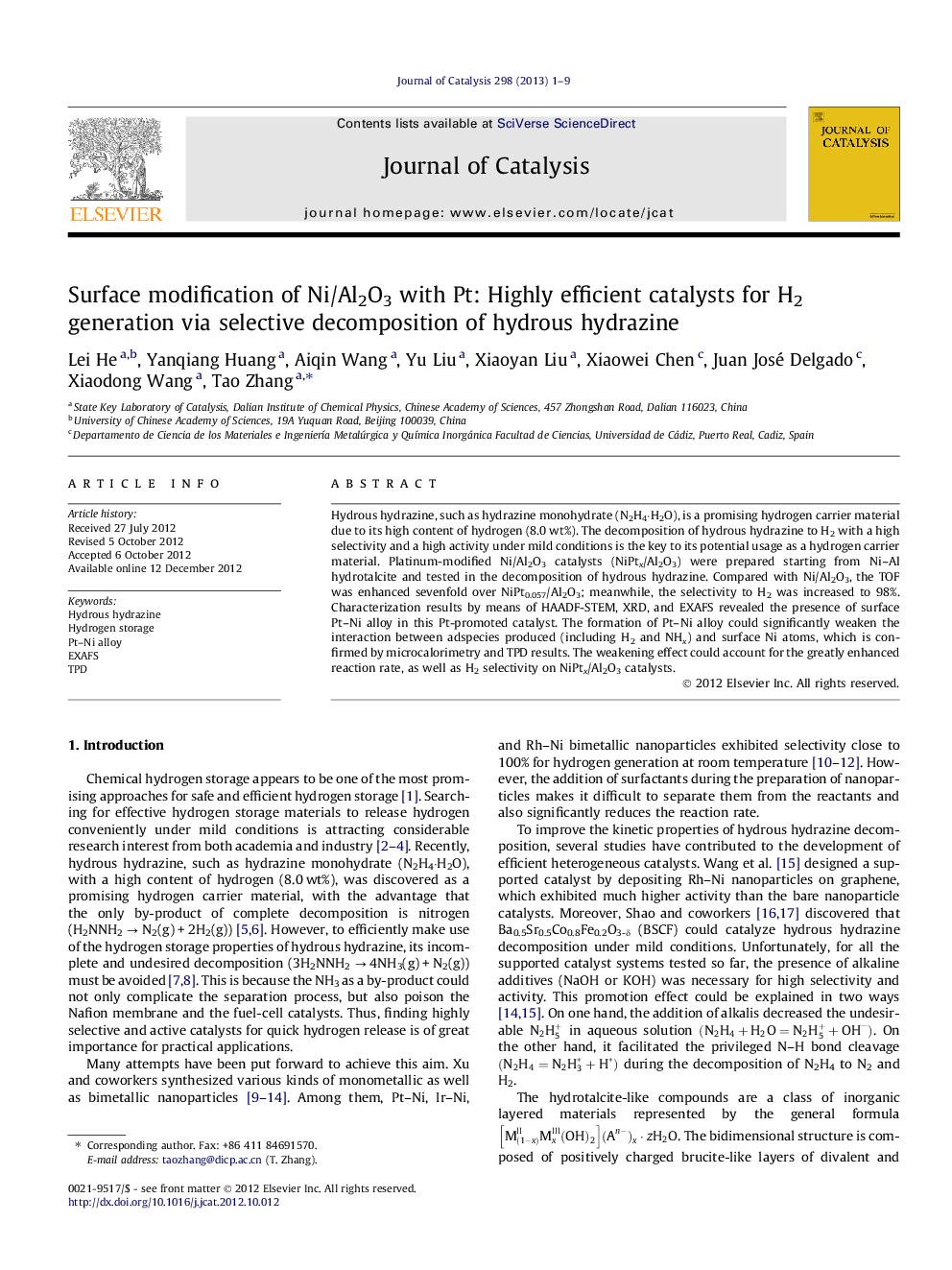| Article ID | Journal | Published Year | Pages | File Type |
|---|---|---|---|---|
| 61301 | Journal of Catalysis | 2013 | 9 Pages |
Hydrous hydrazine, such as hydrazine monohydrate (N2H4·H2O), is a promising hydrogen carrier material due to its high content of hydrogen (8.0 wt%). The decomposition of hydrous hydrazine to H2 with a high selectivity and a high activity under mild conditions is the key to its potential usage as a hydrogen carrier material. Platinum-modified Ni/Al2O3 catalysts (NiPtx/Al2O3) were prepared starting from Ni–Al hydrotalcite and tested in the decomposition of hydrous hydrazine. Compared with Ni/Al2O3, the TOF was enhanced sevenfold over NiPt0.057/Al2O3; meanwhile, the selectivity to H2 was increased to 98%. Characterization results by means of HAADF-STEM, XRD, and EXAFS revealed the presence of surface Pt–Ni alloy in this Pt-promoted catalyst. The formation of Pt–Ni alloy could significantly weaken the interaction between adspecies produced (including H2 and NHx) and surface Ni atoms, which is confirmed by microcalorimetry and TPD results. The weakening effect could account for the greatly enhanced reaction rate, as well as H2 selectivity on NiPtx/Al2O3 catalysts.
Graphical abstractCompared with monometallic Ni catalyst, the rate of H2 generation from hydrous hydrazine decomposition was seven times higher for NiPt0.057/Al2O3 catalysts, with more than 99% selectivity to H2.Figure optionsDownload full-size imageDownload high-quality image (70 K)Download as PowerPoint slideHighlights► NiPtx/Al2O3 catalysts showed a higher N2H4·H2O decomposition rate than Ni/Al2O3. ► The selectivity to H2 was more than 97% on NiPtx/Al2O3 catalysts. ► Ni–Pt alloy was formed during the reduction in Pt-modified Ni–Al hydrotalcite. ► The formation of Ni–Pt alloy weakened surface bonding of H and NHx adspecies to Ni.
